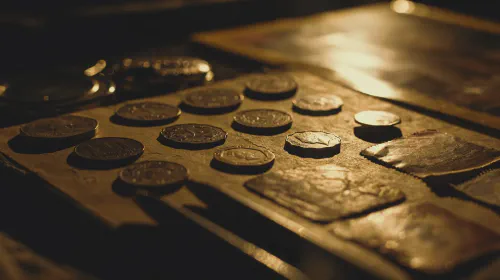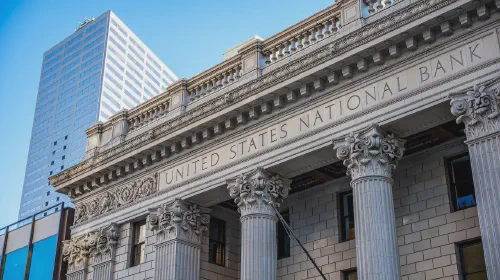How Many Polkadot Coins Are There and How Many Are Left?
Salomon Kisters
Aug 30, 2022This post may contain affiliate links. If you use these links to buy something we may earn a commission. Thanks!
Cryptocurrency prices have been consistently falling for the past few months, with BTC hovering at $21,000, according to the most recent reports by CoinDesk. Widespread interest in cryptocurrencies is cooling off as there is less and less mention of it on social media platforms, whereas only a year ago, every other influencer had a coin to sell to their audience.
This is a cycle that repeats every 3-4 years. While the ‘Bull Run’ sweeps everyone off their feet and makes the public go crazy for cryptocurrency, the industry witnesses a hiatus during this time. It is followed by a period known as the bear cycle, where prices range from lower lows to lower highs.
This is the time when smart money slowly pours into the market as people look for exciting projects to invest in at perceived bargain prices.
Some people choose to go with new projects, believing that they have the most potential for growth. Others would rather invest in established projects that have stood the test of time. Polkadot is one of those.
What is Polkadot?
Polkadot was founded by Dr. Gavin Wood, the co-founder of Ethereum and the man behind the Solidity smart contract language. Dr. Wood had always wanted to create a sharded version of Ethereum, which made him release a whitepaper for Polkadot in October 2016.
Dr. Wood went on to become the founder of Web3 along with Parity’s Peter Czaban. This non-profit organization was established to raise funds for Polkadot as well as work on its research and development needs. Polkadot’s first token sale was hosted in October 2017 using a spend-all second price Dutch Auction to ensure the proper distribution of funds.
Around $145 million were raised in just two weeks by selling 5 of the 10 million coins in the initial offering of DOT, the native token of Polkadot.
In the following years, Polkadot saw a few setbacks, like the Parity wallet hack. Despite these unfortunate events, it has been steadily growing with a strong community behind it that believes in its potential.
Let’s take a look at the fundamentals of Polkadot, and see what makes it so unique.
Polkadot Fundamentals
Polkadot is considered by many to be the future of Web 3.0. It brings together a secure system of specialized blockchains known as parachains. The apps and services developed on Polkadot have the ability to seamlessly operate on all blockchains in the network, making it a highly interconnected yet decentralized web.
Polkadot’s technology makes it quite economical and scalable. It allows a standard set of validators to validate multiple blockchains at the same time, reducing the cost and time required for validation. It also spreads the volume of its transactions across its blockchain network, ensuring that the transaction process is fast, smooth, and cheap.
Perhaps the most innovative part of Polkadot is its Substrate Framework, which allows developers to set up a custom blockchain in minutes. Let’s take a look at how Polkadot was able to achieve this feat.
The Substrate Framework
Dr. Wood wanted to resolve the issues with Ethereum by introducing the Substrate Framework. Ethereum tried to do everything on a single blockchain in an attempt to become “all-purpose.” Thus, the design was very general. This placed a significant load on developers who had to work with high gas fees and a lack of upgradability.
Substrate fixes this problem by having specialized blockchains for different needs connected seamlessly with Polkadot. Each new blockchain gets instant access to parallel transactions and cross-chain transfers. All chains on the Polkadot network can interoperate without bridges - something no other blockchain technology currently offers.
Polkadot shares its security protocols all across the network. This means that new developers are saved from the trouble and hefty cost of securing their own blockchain. However, the developers of each chain are still given the freedom to develop it as they see fit. There are currently more than 150 projects on Substrate ranging from gaming, DeFi, and NFTs to decentralized identities.
Initial Token Distribution
As we already mentioned, Polkadot raised $145 million in sales in October 2017 through a token sale. There were two different sales that occurred at that time: a private sale and a public sale. The private sale raised some $80 million, whereas the public sale ended up getting $65 million.
To verify the identity of the participants in the sale, a KYC system known as PICOPS was used. However, due to regulatory concerns, Chinese and American citizens were excluded from the token sale. All the proceeds were collected in the form of ETH.
Although the initial supply was only 10 million DOT, a community vote was called to change the denomination. It increased all account balances by 100x and reduced the price proportionally, allowing more DOTs to be traded. The allocation of the initial DOT coins went as follows:
- 50% to token sale investors
- 5% to 2019 private sale investors
- 3.4% to 2020 token sale investors
- 11.6% retained for future fundraising purposes
- 30% to Web3 Foundation to develop the Polkadot network
The total supply is currently capped at 1 billion, but that cap is not fixed. DOT is an inflationary token since it has to keep providing rewards to sustain its Proof-of-Stake framework.
Future Supply Schedule
The inflation rate structure of Polkadot is not finalized and is still under debate. The tentative inflation rate is currently 10%. At this point, 75% of DOT’s total supply is being staked to maintain the network and generate rewards.
Polkadot maintains a treasury where it stores a certain percentage of transactions and fees. To control inflation, it was initially decided through voting that 80% of the fees would go to the treasury, while 20% was to be distributed to the individuals who were staking their coins to produce the block.
In the previous paragraphs, you came across terms such as governance, staking, and transaction fees. There are three major ways that the native currency of Polkadot is used in maintaining and deciding the future of the technology.
Let’s see what these methods are in more detail.
Governance
Just like shareholders have voting rights in public companies, people who hold DOT have a say in what its future will be. Of course, the amount of power you have depends a lot on how many DOTs you are holding, but it is still nice to have some control over the future of a project you’re investing your money in.
Decisions that are reached through governance include fees, the addition, and removal of parachains, upgrades, and improvements. Users can also submit proposals on the network, which then undergo voting.
If your proposal gets the maximum number of votes, it is very likely that the change you are advocating will be approved by the developers.
Governance is cool, but let’s talk about the most important thing that you need to do with all the DOTs you are holding.
Staking
Like most modern blockchain technologies, Polkadot uses a Proof-of-Stake mechanism. Traditionally, the system works with users staking their coins as proof to verify transactions on the blockchain. How does Polkadot put its own spin on that?
Polkadot uses a Proof-of-Stake variation known as the Nomination Proof-of-Stake (NPoS) system. The consensus mechanism, despite the network of validators being quite extensive, is fixed instead of dynamic. Only the fixed validators can participate in the act of adding new blocks to the blockchain.
Polkadot is one of the most rewarding blockchains today since it gives people who stake their coins a whopping 13% reward for their investments.
Bonding for Parachains
Polkadot is a relatively new technology. The slots for new blockchains that want to join the network are, therefore, limited. These parachain slots are allotted based on an auction system. The winners don’t get permanent slots; spaces are instead leased to them, and when the lease is over, they have to rebid to keep their spot.
Not all developers have the money required to bid for a slot, which means that good developers who don’t have the funds to secure a spot are at a disadvantage. To curtail this practice, Polkadot introduced Crowdloans.
The Crowdloans feature allows users to bond their tokens to a new blockchain. A blockchain needs as many DOTs as it can get to bid for a spot on the parachain technology. Thus, it has to offer incentives like its own tokens to those who are willing to bet on it.
The Crowdloan system is a new exciting feature in the world of cryptocurrency that makes sure that only those new developers can join the parachain who are backed by the community. The users in the community are also closely tied to their project since their DOTs are bonded to them, resulting in a healthy check-and-balance on the developers.
The Future of Polkadot
Polkadot’s innovative and solution-oriented technology has made it so popular and desirable to the general public and investors alike. However, with Ethereum having nearly completed its sharding project, will Polkadot be able to maintain its edge?
Let us know what you think the future holds for Polkadot in the comment below.
Stay informed with the latest insights in Crypto, Blockchain, and Cyber-Security! Subscribe to our newsletter now to receive exclusive updates, expert analyses, and current developments directly to your inbox. Don't miss the opportunity to expand your knowledge and stay up-to-date.
Love what you're reading? Subscribe for top stories in Crypto, Blockchain, and Cyber-Security. Stay informed with exclusive updates.
Please note that the Content may have been generated with the Help of AI. The editorial content of OriginStamp AG does not constitute a recommendation for investment or purchase advice. In principle, an investment can also lead to a total loss. Therefore, please seek advice before making an investment decision.

How Many Solana Coins Are There and How Many Are Left?
Solana is a new player in the blockchain market. But how many Solana Coins are there, and how many are left?

Avalanche: Open-Sourced Platform for Decentralized Applications and Enterprise Blockchain Protocols
Avalanche is an open-sourced platform for decentralized applications and enterprise blockchain protocols. It aims to solve the blockchain trilemma by combining different consensus mechanisms and a multi-chain structure.

XRP - How Many Are There and How Many Are Left?
XRP has withstood the test of time. But how many XRP are there, and how many are left?
Protect your documents
Your gateway to unforgeable data. Imprint the authenticity of your information with our blockchain timestamp